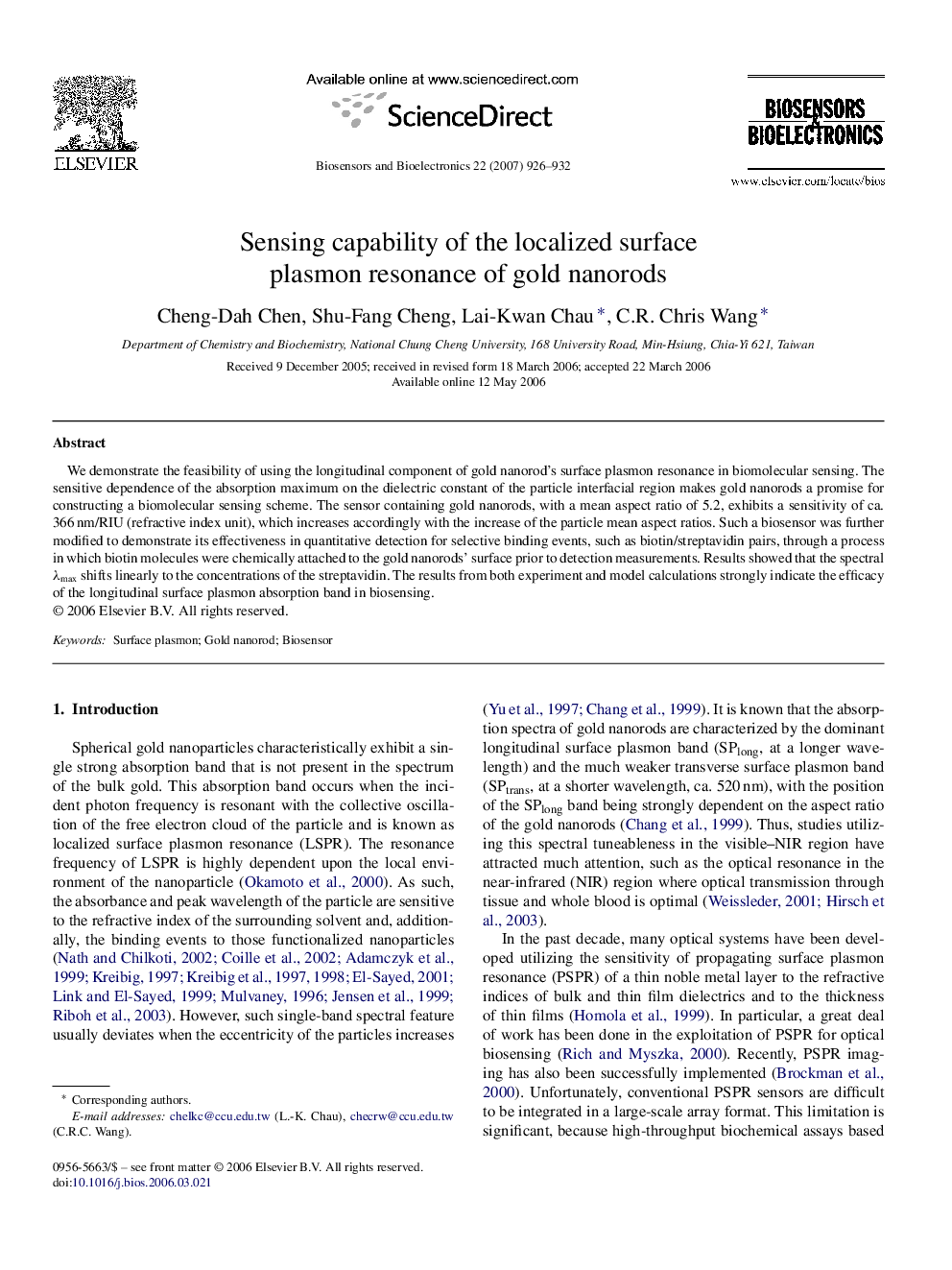| Article ID | Journal | Published Year | Pages | File Type |
|---|---|---|---|---|
| 869248 | Biosensors and Bioelectronics | 2007 | 7 Pages |
We demonstrate the feasibility of using the longitudinal component of gold nanorod's surface plasmon resonance in biomolecular sensing. The sensitive dependence of the absorption maximum on the dielectric constant of the particle interfacial region makes gold nanorods a promise for constructing a biomolecular sensing scheme. The sensor containing gold nanorods, with a mean aspect ratio of 5.2, exhibits a sensitivity of ca. 366 nm/RIU (refractive index unit), which increases accordingly with the increase of the particle mean aspect ratios. Such a biosensor was further modified to demonstrate its effectiveness in quantitative detection for selective binding events, such as biotin/streptavidin pairs, through a process in which biotin molecules were chemically attached to the gold nanorods’ surface prior to detection measurements. Results showed that the spectral λmax shifts linearly to the concentrations of the streptavidin. The results from both experiment and model calculations strongly indicate the efficacy of the longitudinal surface plasmon absorption band in biosensing.
